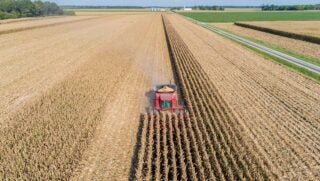On July 31, farmers who had been discriminated against from U.S. Department of Agriculture loans prior to January 2021 received justice.
More than 43,000 payments were made to farmers across the United States, including Puerto Rico, Virgin Islands, and the District of Columbia, totaling $2 billion through the Inflation Reduction Act’s Financial Assistance Programs. The forms of discrimination being addressed in the application for reparation included race, sex, sexual orientation, gender identity, and religion.
Black farmers were also included in these reparations.
“Given the severe discrimination Black farmers have faced — as made evident by the nearly $326 billion dollars in land loss they’ve experienced — we are pleased to see these resources are finally getting to farmers and their families who have waited on this relief for decades,” Legal Defense Fund President Janai Nelson said in a statement. “This aid is a significant step forward in addressing decades of discrimination by the USDA.”
Actions that have money invested into them toward restoring justice to a group of discriminated individuals does show a desire for making amends. And it does make a significant impact. However, there must also be actions to heal the dehumanizing discrimination to Black farmers’ mental health, including the compounding issues in farming in an increasingly difficult economic landscape that makes holding those reparations in their hand amazing at first, but the pain still present.
Mental health has always been a crisis in rural America. According to the American Farm Bureau Federation, farmer suicide rate is two- to five-times higher than the national average due to rising input costs to farming, changing commodity prices, labor shortages, trade distributions, and those issues affecting farmers’ ability to support their family and assets. There is a lot of weight in those decisions and the actions they take, which can be isolating.
With all those facts considered, add the stress of being “othered” or treated differently due to a racial stereotype. Add the worry of that happening to their family if they take on the family farm. It’s almost too much to bear.

The National Alliance on Mental Illness records Black people in the United States having a higher rate of psychological distress for many racially and generationally systemic factors. They are also more likely to get poorer quality care than their White counterparts.
As strides toward mending bridges between the Black community in agriculture and the USDA, there must also be an effort to advertise, support, and/or provide mental health resources for all farmers from various walks of life, but also specifically Black farmers with professionals in PTSD as it relates to discrimination within the agriculture industry.
Also, it’s important to recognize how discrimination intersects with their professional obligations.
As resources are built for farmers in agriculture to discuss their mental health challenges, there are still issues of how farmers of color can describe their trauma with little psychological professionals being versed in African and African American ancestry and history. Often, patients find themselves too busy explaining their ancestral history as it relates to their discrimination, that they rarely have time to explain their feelings around it. With 4 percent of psychologists in the U.S. being Black, there is a growing need for education of systemic racism of Black people in America and recruitment of Black mental health professionals.
Organizations like NAMI are doing what they can to educate, including offering a community conversation series called Sharing Hope on mental health and wellness of Black and African American Ancestry.
Agromedicine, founded out of multiple North Carolina post-secondary institutions, is a mental health program dedicated to identifying and addressing the health and safety risks of farmers, foresters, fishermen, and their families in the North Carolina area.
“Our goal is to reduce injury and illness by conducting research that leads to practical solutions and developing effective educational approaches that can be of benefit daily to the end user. Ultimately we want farming, logging and fishing workplaces to be safe and healthy for all,” the group says.
From crisis lines to financial assistance programs, Agromedicine provides resources that each state should indoctrinate and a mission that is so fundamental to the sustainability of our country’s most hardworking individuals who often are overlooked in their journey toward better mental health.
As we celebrate the long-awaited reparations for Black farmers, we must also recognize that financial assistance alone cannot heal the deep wounds of discrimination and trauma that have persisted for generations. It’s imperative that we rally together as community members, policymakers, and mental health advocates to ensure that these farmers have access to robust mental health resources tailored to their unique experiences.
By prioritizing mental health education, increasing the representation of Black mental health professionals, and creating safe spaces for dialogue, we can help mend the invisible scars that have long affected this vital community. Let us stand united in supporting the mental well-being of Black farmers, empowering them not only to thrive financially but to cultivate a future where their mental health is nurtured, understood, and prioritized. Together, we can build a more equitable agricultural landscape, transforming pain into resilience and paving the way for generations of farmers to come.
Bre Holbert is a past National FFA President and studied agriculture science and education at California State-Chico. “Two ears to listen is better than one mouth to speak. Two ears allow us to affirm more people, rather than letting our mouth loose to damage people’s story by speaking on behalf of others.”



